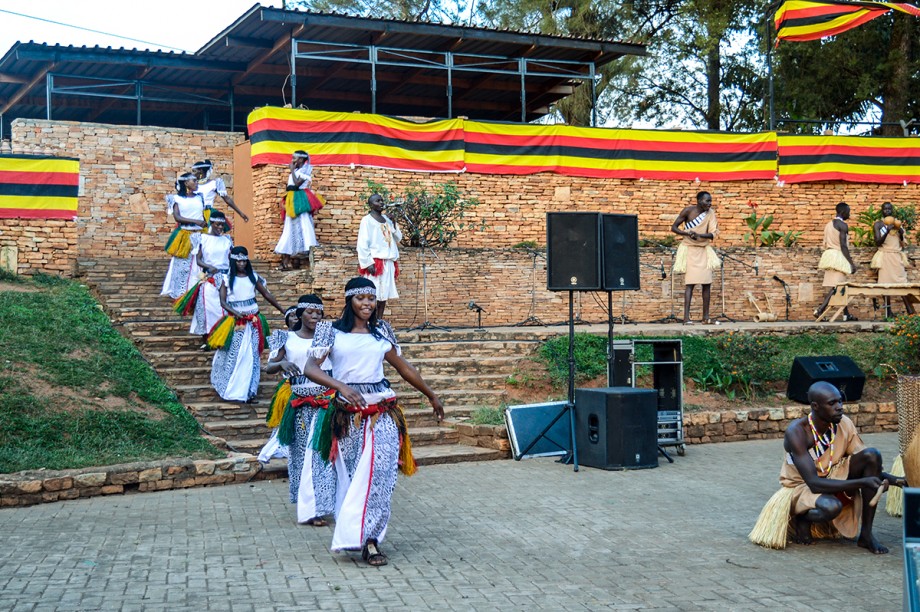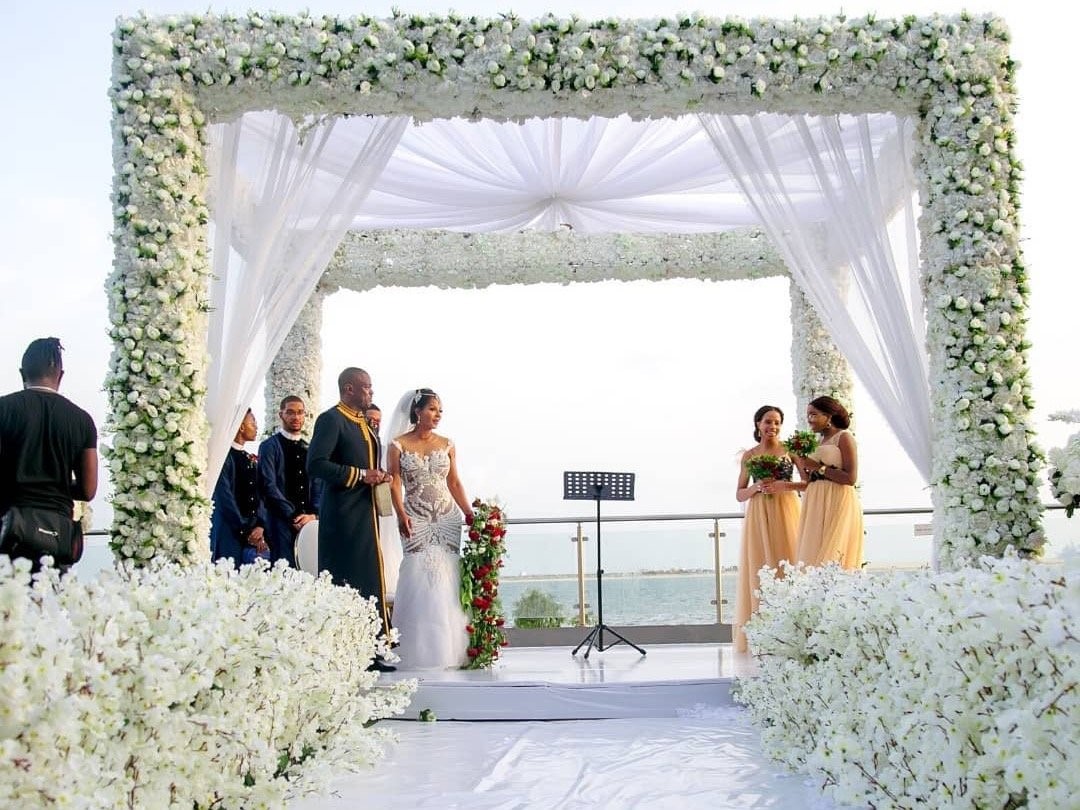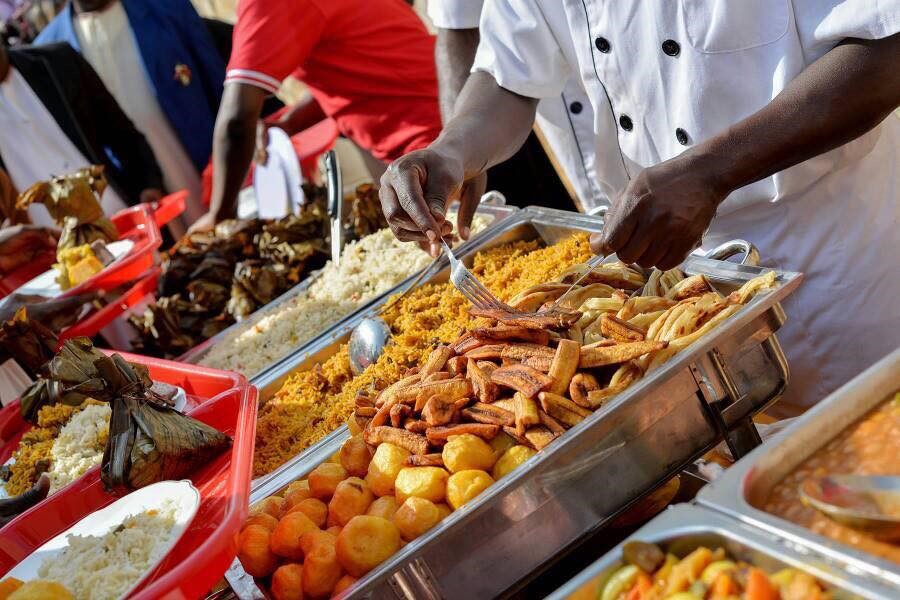7 Ugandan Traditional dances to perform at your wedding
One sure way to experience Uganda’s rich cultural diversity is through dance. With more than 50 subcultures, Uganda boasts such a rich variety of traditions that dance is simply becomes an expression of them. To add to the frenzy that surrounds Ugandan wedding ceremonies, traditional dancers are a reminder of our rich cultural heritage even in a time of morphing wedding traditions.
With their feet and hips, traditional dancers bear the centuries’ weight of old rituals and stories, serving as custodians of our cultural identities. Every twirl and sway, is a tale from the ancestors, preserving the heritage that has been passed down through generations.
Their captivating performances breathe life into wedding festivities, filling the air with a charming rhythm that resonates with the hearts of all who witness their creativity and entertainment.
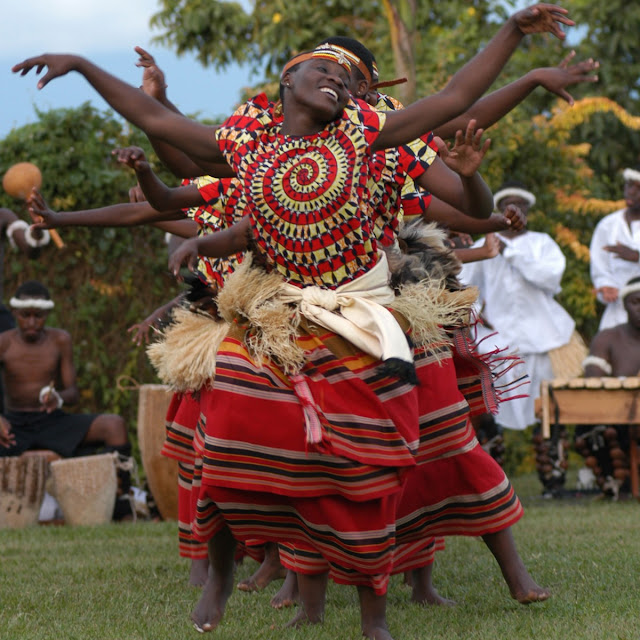
Today we explore the role these mesmerizing performances play in keeping our cultural roots alive and reminding us of the universal language of joy, love and unity that these dances speak at weddings. Here are some cultural dances usually performed at Ugandan weddings.
1. Ekitaguriro
Originating from the Nkore or Ankole kingdom, one of the oldest traditional dynasties in Uganda, it was created after merging the Nkore kingdom with the smaller chiefdoms of Sheema, Buhweju, and Igara. Performed by both men and women, the dance is used to tell stories, communicate vital cultural information, celebration of a good harvest as well as other significant life milestones like birth and marriage. It’s also used to celebrate increase of cows.
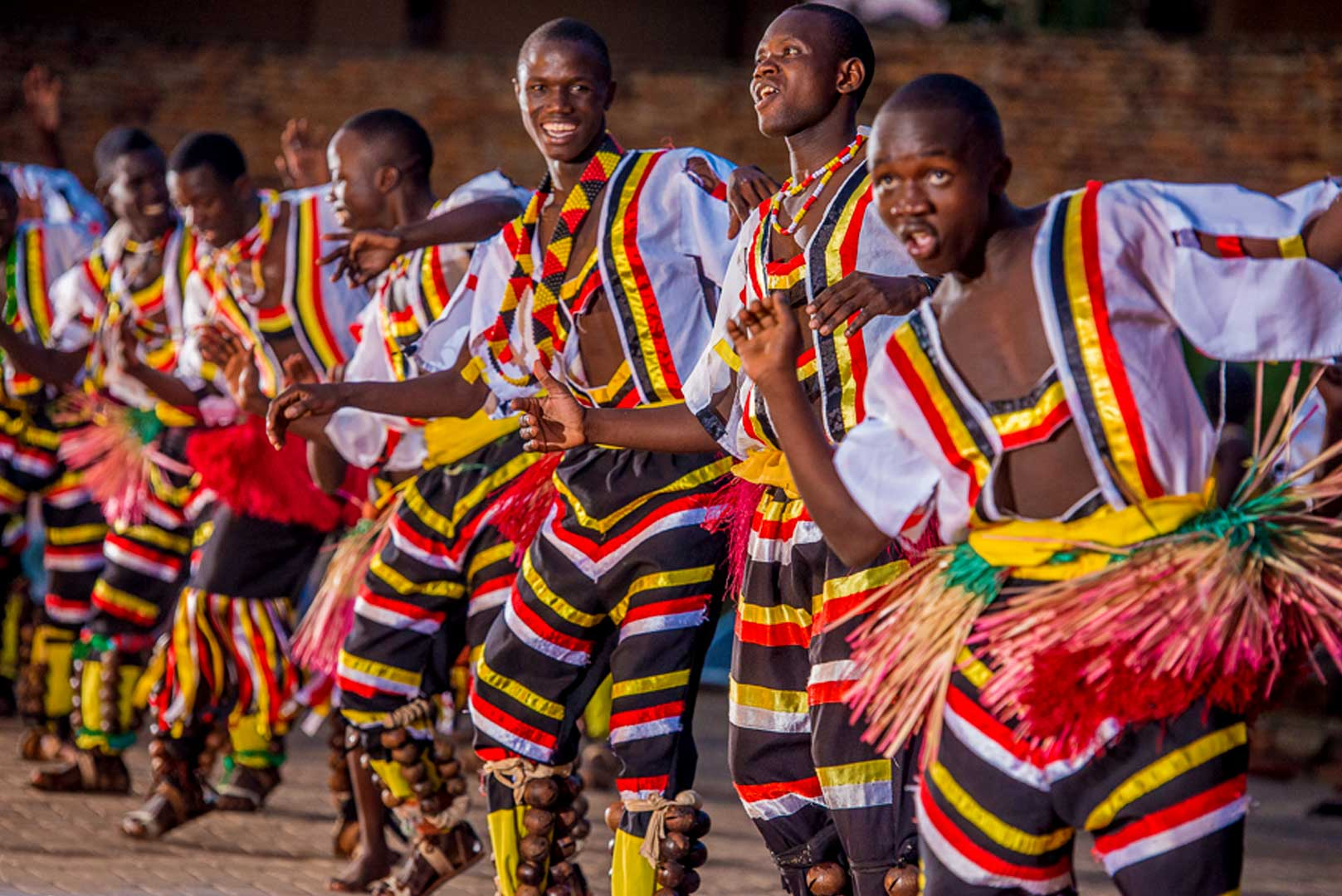
2. Ekizino
The traditional dance of the Bakiga people from Kigezi in southwestern Uganda, it is known for its energy. Themselves being known for being tirelessly hard-working agriculturalists capable of a whole day’s shift in the graden, this dance is a true testament to their energy outside the gardens.
The Kizino dance consists of hand-clapping, embuutu (big drum), endere (flute), ensaasi (shakers) and rhythmic singing led by a lead singer. Both men and women jump and thump the ground as they raise their hands up and down to match the legs. So much energy is dispensed in this dance, dancers literally vibrate on and off the ground with screams of excitement complimenting the rhythmic singing.
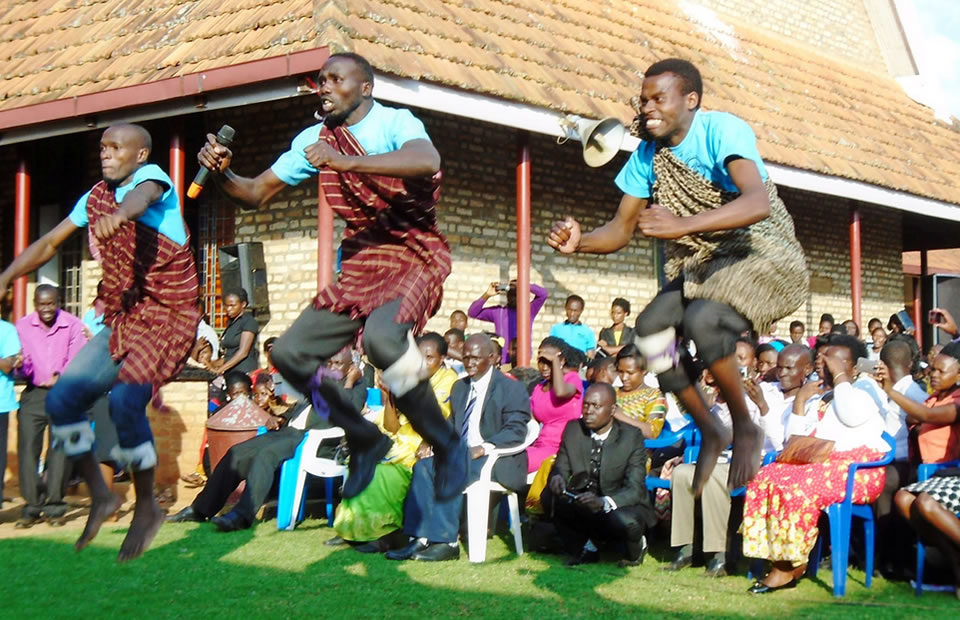
3. Akogo
Among the Nilo-Hamites who settled in Eastern Uganda is the Iteso tribe. Their weddings are celebrated with a traditional courtship dance performance to the sound of a thumb piano (akago), a small drum and flutes customized to create a softer soothing sound.
It is performed by both women and men showing off their stamina, frantically thumping on one foot as the men make advance moves towards the woman of their choice.
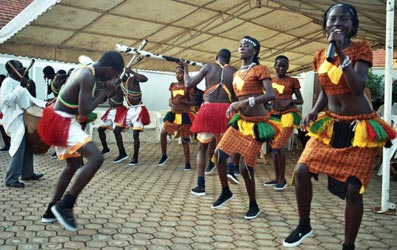

4. Mbaga
Mbaga is a folk dance performed by Baganda girls, a tribe found in the central region of Uganda. Performed by girls that have hit the age of consent to prepare them for the task of being a wife, it evokes sentiments around being a mother, nurse and teacher of children when married.
The text is designed to school the bride about her future roles as wife and mother. She learns about the duties and tasks to perform in her future marriage like serving her future husband, giving birth to children and raising them well; managing housework, doing laundry, and tending the fields. Every task is depicted in the dance and every stroke carries meaning and motive.
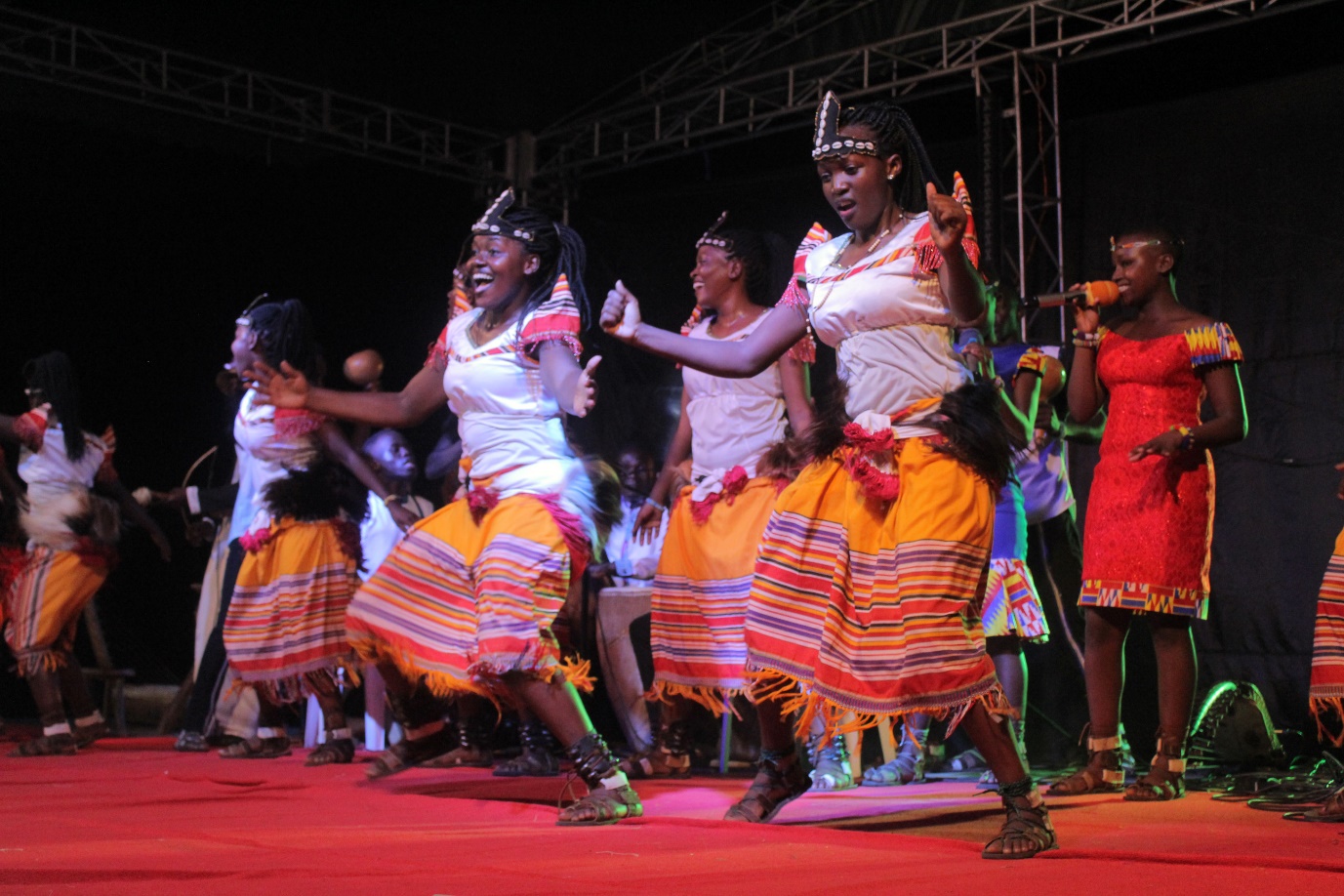
5. Bigwala
Bigwala music and dance is a cultural performance by the Busoga people of Eastern Uganda. Originally performed during royal celebrations such as royal weddings, coronation celebrations among others, in recent decades it has graced the tribes social occasions, weddings being the primary beneficiaries. It is performed by both girls and guys.
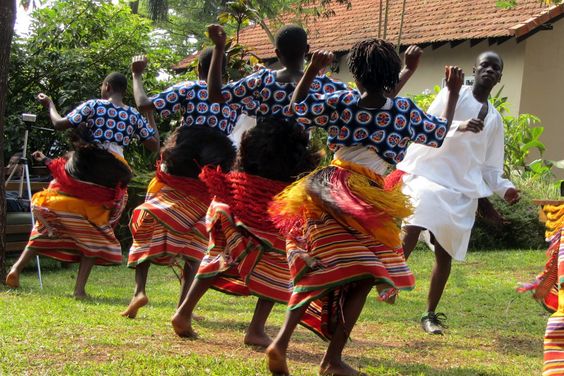
6. Larakaraka dance
Choreographed for courtship in the pre-colonial era, the Larakaraka dance has evolved into one of the most famous dances among the Acholi people who live in the northern part of Uganda. As a courtship dance it is performed during weddings, preparing lovers for their marriage and is usually part of a big ceremony called Nyom from which our own service derives its name.
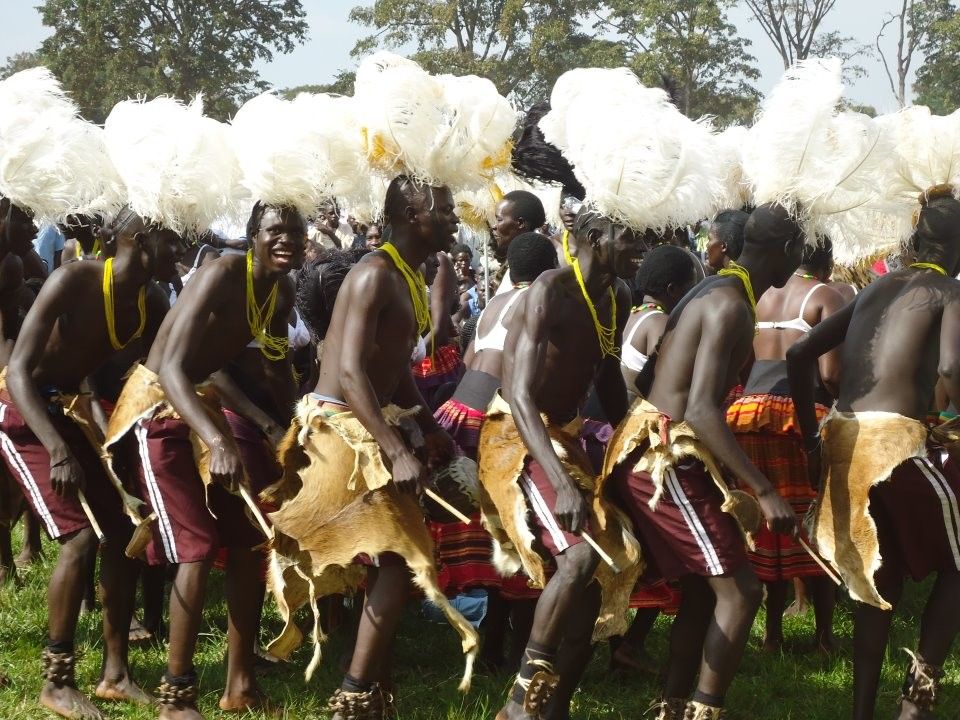
7. Runyege- Ntogoro dance
Runyege is a traditional dance performed by the Banyoro of western Uganda and is danced by women wearing rings around their waists and men having foot rattles. It is from the rattles locally known as “Ebinyege” that the dance derived its name. What makes the dance more interesting is the vigorous foot stamping that characterizes the dance.
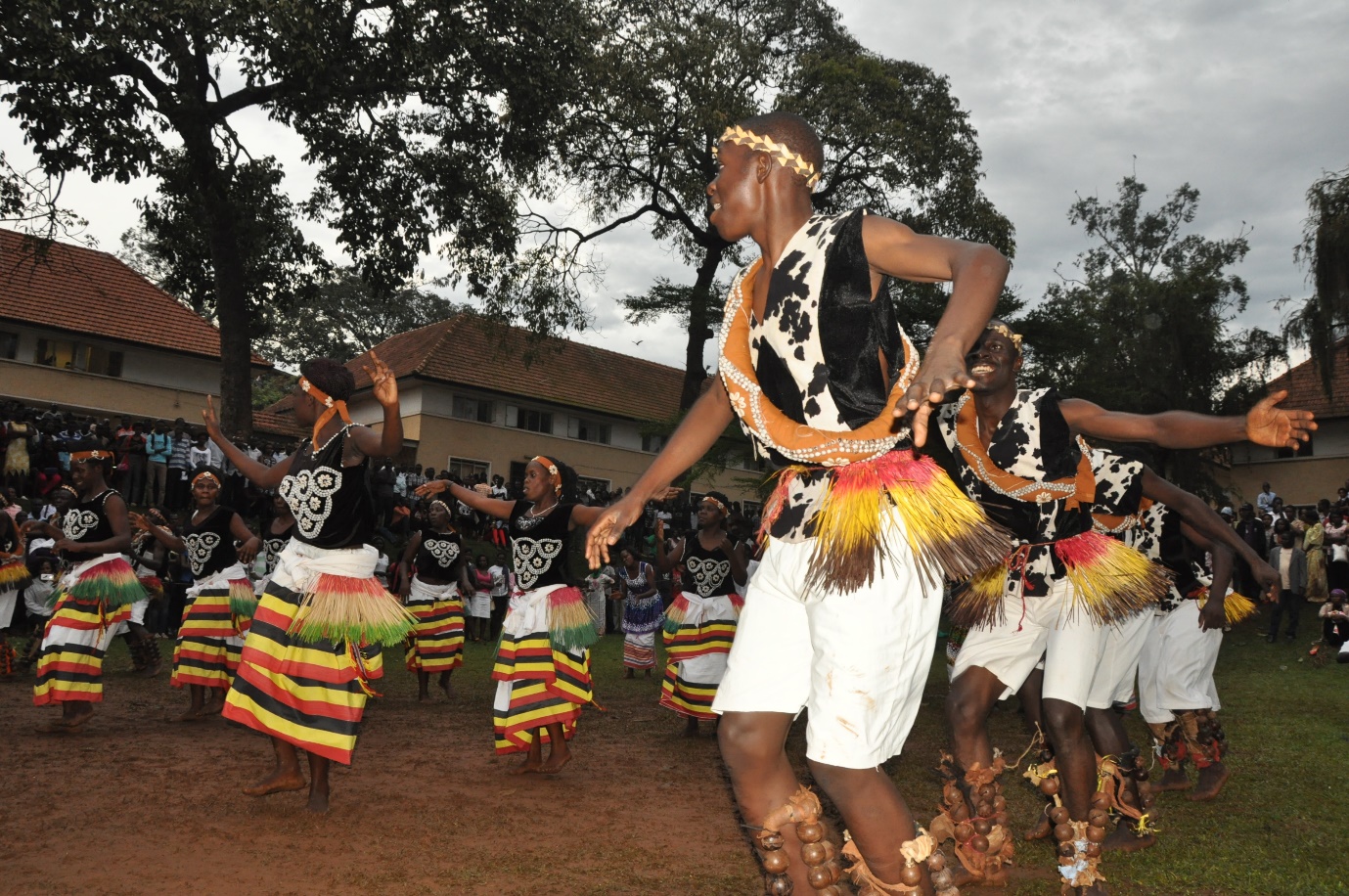
Uganda’s many cultural diversities mean that this blog is just a tip of the iceberg when it comes to traditional dances. Above though are the most common and popular traditional dances in Uganda. So many more exist though among the different ethnicities like Karamojongs, Bagisu, Batoro, Sabins, Bakonjo, Lugbara and many more.
To serenade your wedding with these performances, include these cultural wedding entertainers on your vendor list instructing them on which performances you prefer at the wedding. Most traditional dance troupes can perform more than 3 cultural dances from across the country and wouldn’t mind tweaking them to suit you. Email us at planner@nyomplanet.com for any help around this. Next time we shall tell you which cultural groups would give you the best treat when it comes to cultural dances.
Cover Photo Credit: Apophia Agiresaasi, GPJ Uganda


